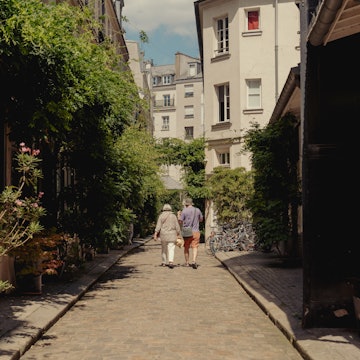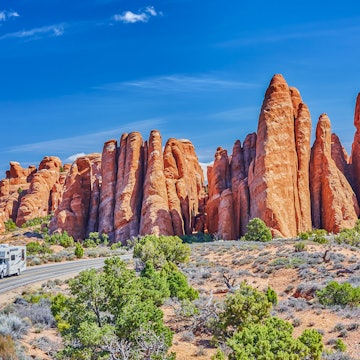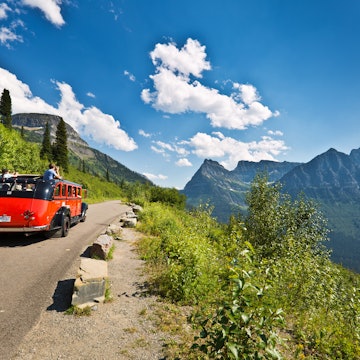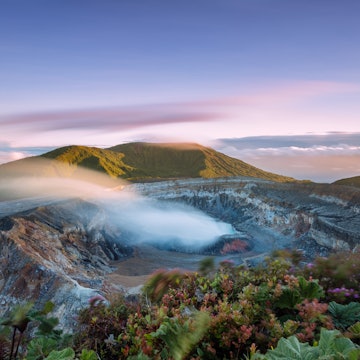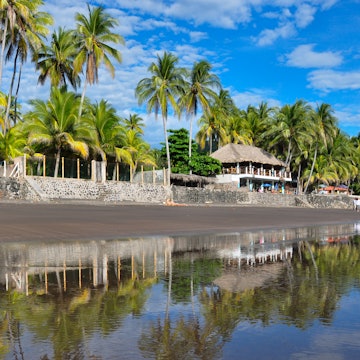

El Salvador is dotted with beach escapes such as El Tunco. Omri Eliyahu/Shutterstock
El Salvador is a small land with a big story to tell. Spilling back from the Pacific Coast of Central America, the country is chock-a-block with sensational surfing spots, mystical and mist-covered volcanoes, historic towns and resilient people who are striving to build a new future for their once-troubled land. Yet many travelers are unaware of its merits.
While the impact of the 1979-1992 civil war and violence by the MS-13 and Barrio 18 gangs still casts a shadow, recent years have seen significant improvements in the security situation. Surfers are returning to El Salvador's beaches, hikers are once again following its volcano trails, and this colorful country is slowly reclaiming its rightful position on the Central America travel map.
Why come here? Try coffee plantations spilling over the slopes of volcanoes, surf-lapped Pacific beaches, historic churches rising over stone town squares, wild mountains thronged with wildlife, and cultured cities that are pushing the nation’s interesting culture and cuisine to the fore.
To set you off on the right track, here are the top things to do in El Salvador.

1. Feel the pulse of San Salvador
The capital, San Salvador, once regarded as a no-go zone, is fast emerging as an up-and-coming technology and business hub, and a vibrant center for Salvadoran culture and gastronomy. Its once-ragged downtown is now picturesque, safe and accessible, and a lively buzz fills the tourist-friendly Zona Rosa and the chic district of Colonia Escalón, known for fine dining and high-end shopping.
Travelers have tended to zip through the capital to get to other regions, but this city has a lot to offer, from packed markets and beautiful churches steeped in history to an assortment of museums, galleries, and hip food and drink spots. Start in the majestically restored Palacio Nacional – take a tour to learn about the fires and earthquakes that shaped its history – then circle the Jardín Centroamérica and drop into the high-tech National Library – an iconic symbol of the new San Salvador.
Drop into eye-catching churches like the stained-glass-filled Iglesia El Rosario, and visit the Catedral Metropolitana, a pivotal location in the city’s troubled political history, where Archbishop Óscar Romero was buried after he was assassinated in 1980. Then get some culture at the Museo de Arte de El Salvador and the Museo Nacional de Antropología David J Guzmán, home to some of the nation’s best Mesoamerican treasures.
Be sure to visit Mercado Sagrado Corazón de Jesús, where fashion stalls give way to rows of inexpensive comedores (simple eateries) serving delicious meat stews and soups, fried fish, breaded chicken and fresh salads. For more market action, swing by the Mercado Central, where vendors do brisk trade in imported American medicines and traditional herbal remedies.
Planning tip: To lunch like a local, swing by the Mercadito De Merliot, a great place to find traditional dishes from all over El Salvador under one roof.

2. Hike up San Salvador’s mother volcano
It’s a quirk of Central American life that so many cities are built next to volcanoes – for that, you can thank the fertile volcanic soils. The skyline of San Salvador is dominated by the Volcán de San Salvador, which last erupted in 1917, reshaping the city landscape. The volcano’s highest peak, El Picacho, rises to 1960m above sea level, providing spectacular views over San Salvador at the end of the 3-hour hike to the summit.
Most people start exploring at El Boquerón (“the Big Mouth”) – a 1.5km-wide crater created by eruptions around 800 years ago. Preserving a thriving volcanic ecosystem and rich biodiversity, the Parque Nacional El Boquerón offers easy, scenic trails around the rim of the crater, reaching up to 1839m. Lookout points allow you to gaze down at the 500m-deep basin below, which is carpeted with lush greenery.
Planning tip: To get to El Boquerón, you can come by taxi, join a tour, or take bus 101B to Santa Tecla, changing to bus 103.
3. Dive into pre-Columbian history at Joya de Cerén
While the site is modest compared to the towering Mayan temples of Guatemala’s Tikal or Mexico’s Chichén Itzá, El Salvador’s UNESCO-listed Joya de Cerén reveals fascinating details about the country’s pre-Columbian history. Here, a Mayan farming village was frozen in time by a fiery eruption from the Loma Caldera volcano in around 600 CE.
The site was rediscovered in 1976, and excavations have revealed thatch-roofed homes, adobe communal buildings, storehouses and a trove of artifacts. Unlike the hot debris that rained down on Pompeii in Italy, the Loma Caldera showered cool ash onto Joya de Cerén, preserving mineralized crops and foodstuffs, including chili peppers, beans, cassava and cacao. Check out the intriguing House of the Shaman and the temazcal, an indigenous sweat lodge used for healing ceremonies and childbirths.
Planning tip: You can get to Joya de Cerén by bus from San Salvador or Santa Ana; take bus 201 as far as the Opico turn-off, then change to bus 108.

4. Surf the Costa de Bálsamo
Once upon a time, the Costa de Bálsamo was known primarily for the resin-giving balsam trees found in abundance along its forested shores, but today, it’s the waves that grab attention, particularly from March to October. The government is now investing heavily in upgrading the coast into a busy beach holiday hub.
Most visitors make for El Tunco (meaning “The Pig”). This was once a laid-back fishing village hidden at the end of a dirt track, but today, it’s a lively surfing hub and backpacker playground. The point breaks here are world-class, and staying and taking lessons in El Tunco is much cheaper than in Mexico and Costa Rica.
Surf schools abound, renting out boards and offering lessons for beginners and improvers; try Wassi Surf School, Wayo Surf and Bamboards Surf Academy, owned by local surfing champion, Jose Diaz. At the end of the surfing day, a party mood takes over as boarders hit the local restaurants and bars.
Detour: About 11km west of El Tunco, El Zonte is famed for being one of the first places in the world to adopt Bitcoin as a local currency. Visitors can pay for everything from meals and rooms to surf lessons using cryptocurrency. It’s a scenic spot, with reliable surf, a relaxed surf scene, a sparkling black sand and pebble beach and sunsets shimmering with misty ocean spray.
5. Enjoy nature at Los Cóbanos
While most of El Salvador’s black-sand beaches are better for surfing than swimming, the far western end of La Costa de Bálsamo has gleaming golden sands, protected as part of the 264-sq-km Área Marina Protegida Complejo Los Cóbanos. Just offshore lies the largest Pacific coral reef system in Central America, with great snorkeling and diving, particularly from November to March.
Below the surface, you can see parrot and angel fish, rays, eels, starfish and green and olive ridley turtles, along with the rusted wreck of the SS Douglas, which sank carrying coffee from El Salvador to Germany in 1980. The beach town of Los Cóbanos has plenty of hotels, and local operators can arrange snorkeling and scuba diving tours.
Planning tip: Another experience unique to Los Cóbanos is whale-watching. Humpback whales seek out the warm waters of the Pacific to mate and give birth during the winter months, when local operators can arrange whale-spotting trips.

6. Sip coffee in Santa Ana
At the end of the 19th century, Santa Ana was transformed from an unremarkable country town into El Salvador’s wealthiest city, all thanks to coffee. As money poured in from the coffee plantations in the hills, the city splashed out on elegant churches and a grand theater, laying the foundations for the bustling modern metropolis of today.
The standout landmark of the city is the Catedral de Santa Ana, a dazzling white neo-Gothic masterpiece that is illuminated at night with pale blue and golden lights. The main square, Parque Libertad, is agreeably dynamic and has great food stands – grab some lunch, sit on a bench and people-watch.
Coffee is forever dear to Salvadoran hearts, and local coffee shops will happily introduce you to the local beans; head to hip Beats Coffee or Cadek Café, both just east of the cathedral. And make time for a meal at Café Téjas, spilling into the garden of a colonial-era house in the center.
Planning tip: Give yourself a few days to explore the area around Santa Ana – climbing the Volcán de Santa Ana and swimming in Lago de Coatepeque are essential activities on the El Salvador bucket list.

7. Climb Volcán de Santa Ana
Looming to the south of Santa Ana, Parque Nacional Los Volcanes (also known as Parque Nacional Cerro Verde) is home to three major volcanoes, Santa Ana, Izalco and Cerro Verde. Each cone offers hikers a very different experience and level of difficulty, and summiting one of these primal peaks is one of the top experiences in El Salvador.
At 2381m, Volcán de Santa Ana is the nation’s highest volcano, and the popular 8km hike to the summit and back takes around 4 hours. The peak last erupted in 2005, but volcanic activity is closely monitored, and the peak is safe to climb. As well as enjoying epic panoramas of land, sea and sky from the top, hikers can gaze over a crater lake colored bright turquoise by sulfuric minerals, with fumes smoking from its center.
Option B is the hike up Volcán de Izalco (1958m), instantly recognizable from its perfectly symmetrical cone. It was once known as “El Faro del Pacifico” (the “Lighthouse of the Pacific”) because of its regular eruptions, but it’s been dormant since 1966. The 7km summit climb is a steep, five-hour scramble through a barren, blackened landscape; come at the weekend, when it’s easier to find a guide.
The park’s most family-friendly option, Cerro Verde (2030m) is good for a short ramble through nature; the shortest hike here takes less than an hour. As its name suggests, this is the greenest volcano in the park, covered in lush forests that are alive with birds – look out for mockingbirds, hummingbirds, turquoise-browed motmots and cinnamon-bellied flowerpiercers.
Planning tip: Guides for summit hikes can be arranged at the park gates, an hour by bus from Santa Ana. After finishing your hike, go for lunch or book a night at Casa 1800 Cerro Verde, an incredible boutique hotel complex with fantastic views and delicious food.

8. Swim in Lago de Coatepeque
On the fringes of Parque Nacional Los Volcanes, the enormous crater lake of Lago de Coatepeque is one of the country’s most picturesque natural attractions. It was formed over 72,000 years ago after a volcanic eruption, creating a sparkling caldera lake that undergoes a mysterious transformation every few years, when its waters turn a vivid turquoise. The phenomenon may be due to the proliferation of algae or chemical changes to the mineral content and pH levels of the water.
The lake is typically accessed from El Congo to the north, around 18km from Santa Ana; buses run here every half hour. You can access public sections of the lake for free, but most people choose to pay a small entrance fee to access one of the many stilted restaurants that line its shores. Either side of lunch, you can swim in the lake, sunbathe on the decks, or go kayaking, paddleboarding or jet skiing.
Planning tip: For a different kind of adventure, try freshwater diving. The lake bottom drops to 115m, and dive trips can be arranged with Water Quest in El Congo to explore submerged forests and lava flows and meet freshwater crabs and catfish.

9. Meander along La Ruta de Las Flores
El Salvador’s beloved Ruta de Las Flores passes through a chain of small towns in El Salvador’s coffee region, taking its name from the white coffee blooms that unfurl every spring. Bookended by Sonsonate in the south and Ahuachapán in the north, the 35km route weaves through the intriguing towns of Nahuizalco, Juayúa, Salcoatitán, Apaneca and Concepción de Ataco, showcasing the best of rural El Salvador.
As you trace the route by local bus, you can stop off at volcanic thermal springs, waterfalls, lagoons and labyrinths, in between exploring these friendly country towns. You could easily spend a week traveling around this area and soaking in the charming idiosyncrasies of each town along the route.
Feast at fantastic food markets, sip endless cups of coffee, hike through coffee plantations and ease into laidback, small-town life. Start in Juayúa, with its famous weekly food festival, and see where the journey takes you.
Planning tip: Visit Juayúa at weekends to enjoy the weekly Feria Gastrónomica, when the town center is overrun with food stalls; ordering a plato mixto (mixed plate) will give you a bit of everything to try. The best time to come is noon to 3pm.

10. Fall in love with arty Suchitoto
Visitors quickly fall for the charms of adorable Suchitoto, briefly named the country’s first capital by the Spanish in 1528. Suchitoto has long been considered the cultural center of El Salvador, with a rich legacy of arts and crafts and a history tied to the production of añil (indigo). Made from the leaves of the Xiquilite tree, indigo was used as a dye by the Indigenous Pipil people long before the Spanish reached El Salvador.
Suchitoto’s artistic spirit lives on today thanks to iconic art institutions like the Centro Arte para La Paz, whose mission ties artistic expression to the prevention of domestic violence. To discover more about the tradition of indigo dyeing, visit Arte Añil, a design boutique where all the merchandise is in monochrome blue, or take a tour at family-owned indigo farm Hacienda Los Nacimientos to see the preparation of raw dye.
Planning tip: Allow time for some detours to enjoy the lush scenery around Sushitoto. Popular destinations include Lago Suchitlán, a large artificial lake brimming with birdlife, and Cascadas Los Tercios, a waterfall spilling over blocks of columnar basalt, created by cooling lava.
11. Get off the beaten path in Eastern El Salvador
If you ask Salvadorans about “El Oriente Salvaje” – the Wild East – they’ll tell you that this is where the country’s most stunning beaches and unspoiled nature can be found. Verdant and virginal, El Oriente is a sprawl of thick mangrove forests, gushing waterfalls, surf beaches, dotted islands and pine-clad mountains.
Start exploring from Alegría in Usulután department, a calm coffee town on the slopes of Volcán Tecapa. Splicing through the town is Mirador de Las Cien Gradas, a giant rainbow-colored staircase that takes you to panoramic views of eastern El Salvador. Head 2km from Alegría to swim in La Laguna de Alegría, a sparkling watering hole said to possess medicinal properties.
Criminal gangs once operated along the waterways of the Bahía de Jiquilisco, but today this UNESCO biosphere reserve is beginning to flourish once again. Protecting the largest mangrove forests in El Salvador, the reserve spans inlets, islets and white sandy beaches, providing a home to diverse coastal birdlife.
Surfers congregate on the coast of El Oriente Salvaje, a designated World Surfing Reserve. Punta Mango is frequently touted as having the best waves in the country, including a famous right-hand point break, but the scene spills along the coast to grey-sand Playa El Cuco and small, secluded Playa Las Flores.
Planning tip: Extend the adventure on the bird-filled islands of the Golfo de Fonseca, accessible on boat tours from La Unión, about an hour east of El Cuco. Climb 1225m Conchagua, to gaze on these specks of green from the mainland.
This article was adapted from Lonely Planet’s Central America guidebook, published in October 2025.









